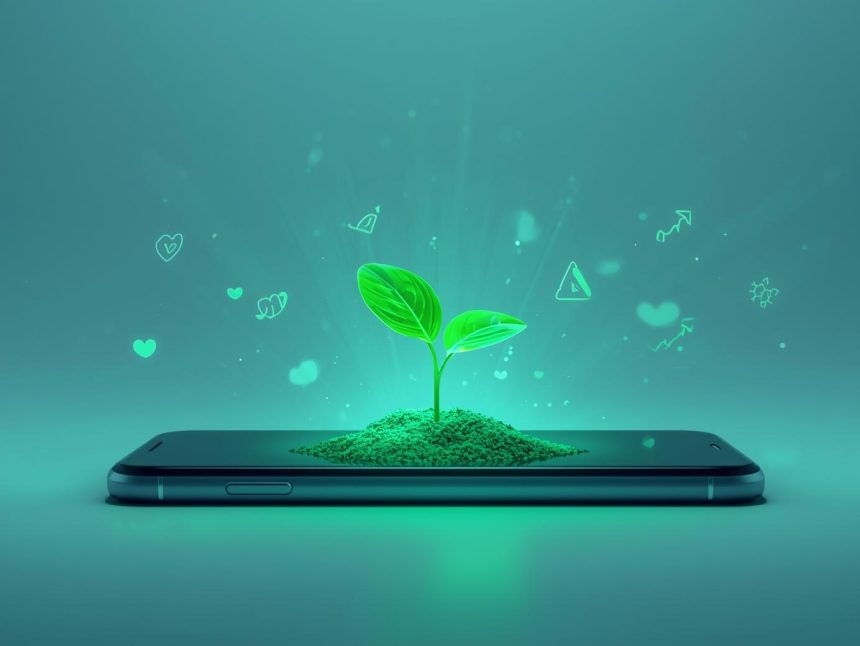Everyone’s talking about saving the planet these days, and businesses are no exception. Digital marketing—using online tricks like emails, websites, and social media to reach customers—offers a way to grow your business without hurting the Earth. This article dives into eco-friendly digital marketing, why it’s a big deal, and how you can use it to shine. We’ll back it up with real numbers and show you easy steps to get started.
What’s Eco-Friendly Digital Marketing?
Eco-friendly digital marketing is all about promoting your business online in a way that’s kind to the environment. Forget paper ads or mailed catalogs—think emails, posts, and web pages instead. It skips the waste and energy of old-school marketing. For instance, an email blast beats a stack of flyers because it doesn’t chop trees or burn fuel. In 2023, 5.4 billion people were online worldwide, about 67% of everyone on Earth (Statista, 2023). That’s a huge crowd you can reach without a single paper cut.
Why It’s a Game-Changer
People want companies to step up for the planet. A 2022 study found 66% of shoppers worldwide would spend more on sustainable stuff (NielsenIQ, 2022). Going green isn’t just nice—it’s smart business. Old marketing habits, like printing posters, pile up trash. The U.S. Environmental Protection Agency says the U.S. made 292 million tons of waste in 2018, with paper and boxes as big culprits (U.S. EPA, 2020). Digital marketing shrinks that mess and wins over Earth-loving customers.
Why Green Marketing Wins
Switching to eco-friendly digital ways has awesome perks. Check these out:
- Keeps Resources Safe: No paper or delivery trucks means more trees and less junk.
- Cuts Carbon Big Time: Online campaigns dodge shipping emissions. The Carbon Trust says they can slash carbon by 70% compared to print (The Carbon Trust, 2021).
- Saves Cash: Tools like Mailchimp or Canva cost way less than printing presses.
- Hits More Eyes: With billions online, your message flies far without waste.
How to Go Green with Your Marketing
Ready to try it? Here’s how to make your marketing planet-friendly:
1. Send Emails, Not Paper
Ditch mailed ads for email campaigns with Mailchimp or Constant Contact. In 2022, 4.26 billion people used email, and that’s heading to 4.73 billion by 2026 (Statista, 2022a). It’s fast, free of waste, and gets results.
2. Rock Social Media
Post on platforms like Instagram or Twitter instead of plastering billboards. In 2023, 4.9 billion people scrolled social media (Statista, 2023a). Share your green vibes and watch fans grow.
3. Make a Planet-Friendly Site
Host your website with a green provider like GreenGeeks, powered by renewable energy. Keep it light—fewer big files use less juice. Google says 53% of mobile users bounce if a site lags over 3 seconds (Google, 2018). Fast and green keeps everyone happy.
4. Master SEO
Search engine optimization (SEO) gets you noticed on Google without pricey ads. Use Google Keyword Planner for eco-terms like “green gifts.” Google sees 8.5 billion searches daily (Internet Live Stats, 2023), so SEO’s a low-waste winner.
5. Share Online Goodies
Swap printed guides for blogs, eBooks, or videos. Canva lets you whip up cool stuff for free. HubSpot found 82% of marketers lean on digital content—it’s green and spreads fast (HubSpot, 2022).
6. Use Less Power
Plan posts with Hootsuite to cut device time. Data centers ate 1% of global electricity in 2022, so every bit helps (IEA, 2022).
Real-Life Green Wins
Some brands nail this already:
- Patagonia: Their 2022 “Don’t Buy This Jacket” push exploded online, urging folks to reuse—all digital, no paper (Patagonia, 2022).
- Lush Cosmetics: Lush spreads its plastic-free mission via its site and Instagram, reaching millions with zero waste (Lush, 2023).
Watch Out for These
It’s not all smooth sailing. Here’s what to dodge:
- Ad Noise: Too many online ads? Make yours pop with green hooks.
- Power Use: Pick green hosting and smart tools to keep energy low.
- Tech Trouble: New stuff feels hard? Start with freebies like Canva.
What’s Next?
Digital marketing’s future is green and growing. Experts predict it’ll hit $1.5 trillion by 2030, driven by sustainability (Grand View Research, 2023). Smart tech like AI will cut waste even more. The EU’s Green Deal wants emissions down 55% by 2030, and digital’s a key player (European Commission, 2020).
Small Business Hacks
Own a small shop? Try these:
- Grab free tools like Canva or Google Analytics.
- Tell your green tale online—customers love it.
- Team up with eco-buddies for digital shoutouts.
Wrap-Up
Eco-friendly digital marketing grows your business and saves the planet. Tools like emails and social media reach tons of people with no trash. Numbers prove it—66% of folks pick sustainable brands (NielsenIQ, 2022). Jump in with easy steps, and you’ll thrive while keeping things green. The future’s here—grow easy, go green!
References
European Commission. (2020). The European Green Deal. https://ec.europa.eu/info/strategy/priorities-2019-2024/european-green-deal_en
Google. (2018). Mobile speed matters. https://www.thinkwithgoogle.com/marketing-strategies/app-and-mobile/mobile-site-speed/
Grand View Research. (2023). Digital marketing software market size, share & trends analysis report. https://www.grandviewresearch.com/industry-analysis/digital-marketing-software-market
HubSpot. (2022). The state of marketing in 2022. https://www.hubspot.com/state-of-marketing
International Energy Agency. (2022). Data centres and data transmission networks. https://www.iea.org/reports/data-centres-and-data-transmission-networks
Internet Live Stats. (2023). Google search statistics. https://www.internetlivestats.com/google-search-statistics/
Lush. (2023). About us. https://www.lush.com/uk/en/about-us
NielsenIQ. (2022). Consumers demand sustainability. https://nielseniq.com/global/en/insights/report/2022/
Patagonia. (2022). Don’t buy this jacket. https://www.patagonia.com/stories/dont-buy-this-jacket/
Statista. (2022a). Number of email users worldwide from 2017 to 2026. https://www.statista.com/statistics/255080/number-of-e-mail-users-worldwide/
Statista. (2023a). Number of social media users worldwide. https://www.statista.com/statistics/278414/number-of-worldwide-social-network-users/
Statista. (2023). Number of internet users worldwide. https://www.statista.com/statistics/617136/digital-population-worldwide/
The Carbon Trust. (2021). Carbon impact of digital vs. print advertising. https://www.carbontrust.com/news-and-insights
U.S. Environmental Protection Agency. (2020). National overview: Facts and figures on materials, wastes and recycling. https://www.epa.gov/facts-and-figures-about-materials-waste-and-recycling















